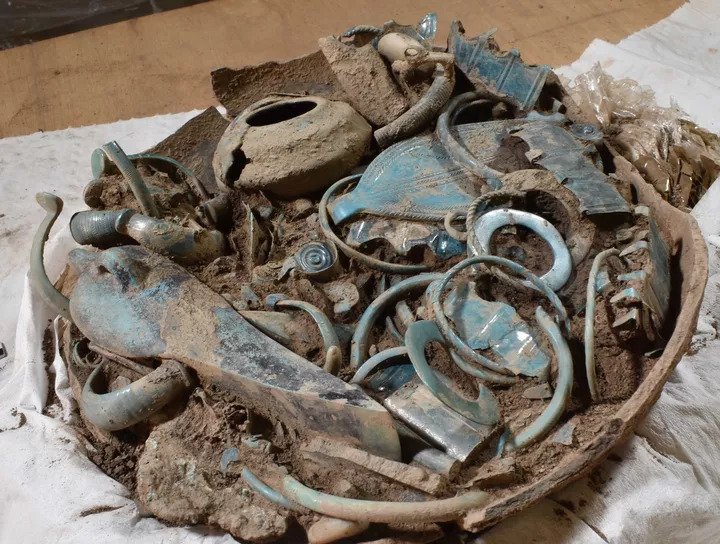French archaeologists have made a remarkable discovery. Led by Pierre-Yves Milcent of the University of Toulouse Jean Jaurès, the team has been excavating near Gannat, in the south of the Allier department. Their efforts have yielded a massive fortified settlement dating back to around 800 BC, making it one of the largest of its kind ever found in France.
The sheer size of the settlement, spanning roughly 30 hectares, is impressive, but the true highlight lies in the unearthed deposits containing hundreds of meticulously preserved bronze objects. This discovery instantly elevates the Gannat site to the status of the richest source of Bronze Age metalwork in France, and potentially one of the most significant in Europe for the period.
The story began in 2017 when looting activities unearthed the first deposit, which was subsequently acquired by the Anne de Beaujeu Museum. Unfortunately, the lack of a controlled excavation meant valuable context was lost. However, this served as a wake-up call, prompting meticulous excavations that unearthed two large, intact deposits in 2020.
These deposits, each meticulously placed within decorated ceramic vases, were a revelation. Unlike most such finds, they were completely undisturbed. Each vase held an assortment of bronze objects, including tools like axe and knife blades, as well as ornaments like bracelets, pendants, and decorated belts. Weapons like daggers and spear points were also present, alongside intriguing finds like chariot parts and horse harness elements. Notably, each deposit contained curiously chosen river pebbles, one set white and the other reddish.
The most striking aspect lies in the organization of the deposits. Both followed a similar pattern, with jewelry grouped at the vase’s base and axe blades arranged head-to-tail above. This consistency across geographically distinct deposits suggests a specific ritual, possibly linked to the founding or abandonment of the settlement.
These discoveries offer unprecedented insights into a long-standing archaeological puzzle: the purpose behind Bronze Age metal deposits. Traditionally found in locations that are neither burials nor temples, these deposits have fueled debate for centuries. The lack of undisturbed finds and detailed excavations hampered past attempts at explanation.
The Gannat finds, with their pristine condition and meticulous excavation, represent a game-changer. They strongly suggest the deposits were intentional offerings, highlighting the significance of careful archaeological approaches for such contexts. The contrast between these documented finds and those lost to looting underscores the crucial role of proper excavation in preserving historical knowledge.
Further bolstering the research, the team unearthed two additional deposits in August 2021. These finds, currently under study, hold the potential to strengthen the initial hypotheses formed during the 2020 excavations.
The Late Bronze Age, spanning roughly 2200 to 800 BC, remains a relatively obscure period in European prehistory. These remarkable discoveries not only illuminate this era but also provide vital clues regarding the evolution of Celtic societies. The Gannat settlement, with its complex social structure, advanced agricultural practices, and extensive metallurgical production, offers a glimpse into the foundations upon which Celtic cultures of the Iron Age would flourish.
